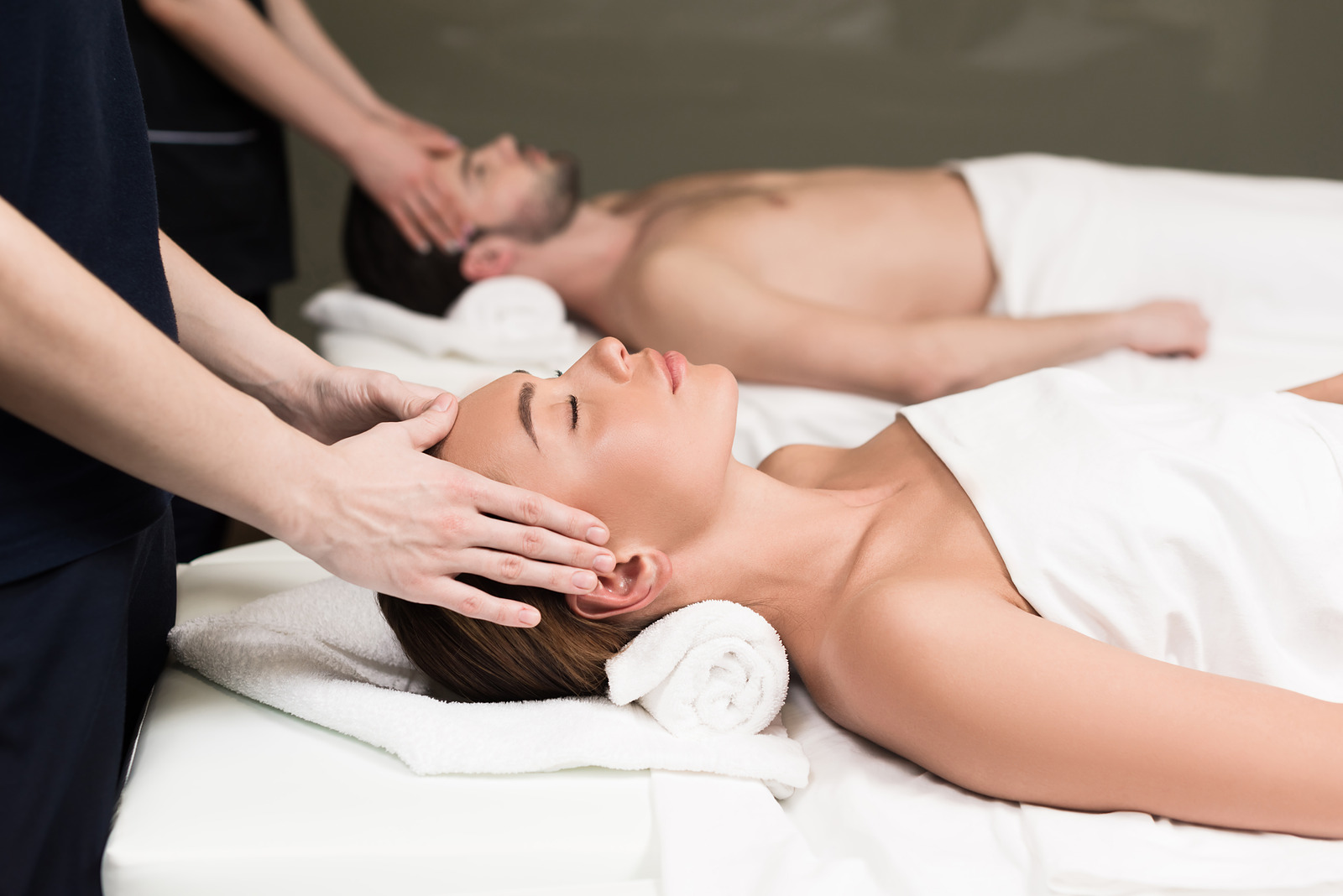
Deep Tissue Massage vs Firm Pressure Massage
There is often a misconception by clients that “firm pressure” is the same as “deep tissue massage.” To help clear up the confusion, we’d like to give you a clear explanation of what true deep tissue massage is and how its purpose is quite different than that of a Swedish-style massage delivered with firm pressure.
To understand this difference, it’s helpful to first think of the body’s fascia and muscles in layers. Notice in this image the many overlapping layers of these tissues. Fascia is a connective tissue that permeates the entire body – literally holding the body together, wrapping around every muscle, nerve, organ, blood vessel, and bone. These wrappings are all interconnected in a three-dimensional maze. The muscle layers run superficial too deep in the body.
The significant difference in the two approaches is their effect on these layers. A Swedish technique uses lubricant to glide over the layers – whether that be on a superficial layer (light pressure) or a deeper layer (firm pressure). There may also be kneading of the muscles, vibration or percussion to stimulate the muscles, and passive and/or active joint movements. All of these techniques serve to increase circulation of blood and lymph, soften and relax the tissues, reduce cortisol levels in the body (the stress hormone), and provide a generalized sense of relaxation for the client.
Deep tissue technique uses very little to no lubricant so that the muscles can be hooked or grabbed, thereby stretching and lengthening them, and to separate adhered muscle compartments. Strokes will be considerably slower and possibly shorter as the therapist waits for a slow release of tension.
Some areas may be skipped so more time can be spent on specific areas of need. Doing this provides better alignment of the muscles and less restriction in the joints, thereby improving their movement and function. It is a massage in which the primary goal is less about general relaxation and more about promoting change in the actual structure of the body.
Does Deep Tissue Massage Have to be Painful to be Effective?
Some believe that Deep Tissue Massage means that the therapist pushes as hard as possible with their elbow into the client’s muscles. The more it hurts, the more effective the work.
This is not only an inaccurate and potentially harmful picture of this type of therapy, but such misguided practices can bruise muscles, elicit a defensive reaction in a client’s body, and worsen pain cycles. Properly executed deep tissue work should not cause the client to grit their teeth in agony as the therapist coerces the body into submission! If you find yourself clenching, shortening or holding your breath, or gritting your teeth, then it’s TOO DEEP. Even when it gets intense, it should not go above about a 7 on the pain scale: enough to “hurt so good,” but not enough that you want to leap off the table (and never come back).
So What Should Deep Tissue Massage Feel Like?
By working with the layers – softening the superficial layers first and moving slowly into the deeper layers – deep tissue massage can allow the client’s body to deeply relax.
The therapist may utilize some Swedish techniques to warm up the tissues (kneading, friction, percussion), softening the superficial layers so that he or she can access the deeper ones more easily. Then, with little or no lotion, the therapist utilizes the hard surfaces of their hands and arms — surfaces such as fingers, knuckles, forearms, and elbows — and employs a very slow, sustained type of stroke.
With no lotion or oil to cause sliding, it becomes possible to fully get a hold of the shortened fascia; this is necessary in order to lengthen it. Slow, sustained strokes are what can change this tissue from a short, hardened state to a lengthened, fluid state. The process is not unlike stretching saltwater taffy. You’ve got to get a hold of it, warm it up, and work it very slowly. The work may sometimes be intense, eliciting moderate discomfort as old adhesions and chronic dysfunctional patterns are altered. But that leads to a much more fluid, easy sense in the body.
How Do I Know Which One to Choose?
There is not necessarily a hard line between these two techniques, and many sessions often incorporate both depending on your needs. It is usually the case that not all the muscles in your body need deep tissue techniques applied. Rather than being overly concerned with choosing the “right” session, make sure you communicate to your therapist the goals for your session so that he or she can customize the right blend of techniques for you.
One massage style is often the foundation of the session, with other techniques used as needed. Due to the slow pace of deep tissue massage it is necessary to schedule a 90-minute session if you would like your full body addressed. Use these guidelines for communication based on your primary goal for the session:
- If your goal is to relax, reduce stress, and have a full body massage with firm pressure, a Swedish massage would be the best foundation.
- If your goal is to have all of the above, but with some focused “fix-it” work on some of those minor nagging spots, a 50/50 massage is right for you, where deep tissue techniques will be used only where needed.
- If you have an area of chronic or acute pain and limited mobility that needs focused work; if you are recovering from an athletic event and have a specific group of muscles needing attention, a Deep Tissue massage would be right for you to free those tight, sticky tissues.
Tips for After the Session
After the session and sometimes into the next day you may feel some tenderness or mild soreness. Your therapist might suggest ice or heat for pain relief and/or some gentle stretching.
Epsom salt bath: Although there is not much in the way of scientific evidence to prove the efficacy of an Epsom salt bath for reducing muscle soreness, plenty of people report that their aches and pains are alleviated significantly after a good salt soak. Pour 2 cups into a warm bath and soak to your heart’s content.
Avoid strenuous activity, but a mellow walk may help to adjust your body to the changes in the tissue and joints. The result of a good deep tissue massage is often significant pain relief, greater freedom of movement, and a more fluid sense of balance in the body.
Stay hydrated and get a good night’s rest!
Communication is Key
A skilled therapist will tailor your session exactly as you need it based on your needs. As in all bodywork, the key to a gratifying experience is largely a function of good communication and clarification of objectives. We promise, we WANT you to speak up if there is anything we can do to make your session more comfortable so that you have a positive experience.
Schedule your massage appointment online for when Botanica Day Spa reopens soon! We’ll keep you posted with updates, so be sure to subscribe to our newsletter below to stay informed!
Love,
Gen



Leave a Reply